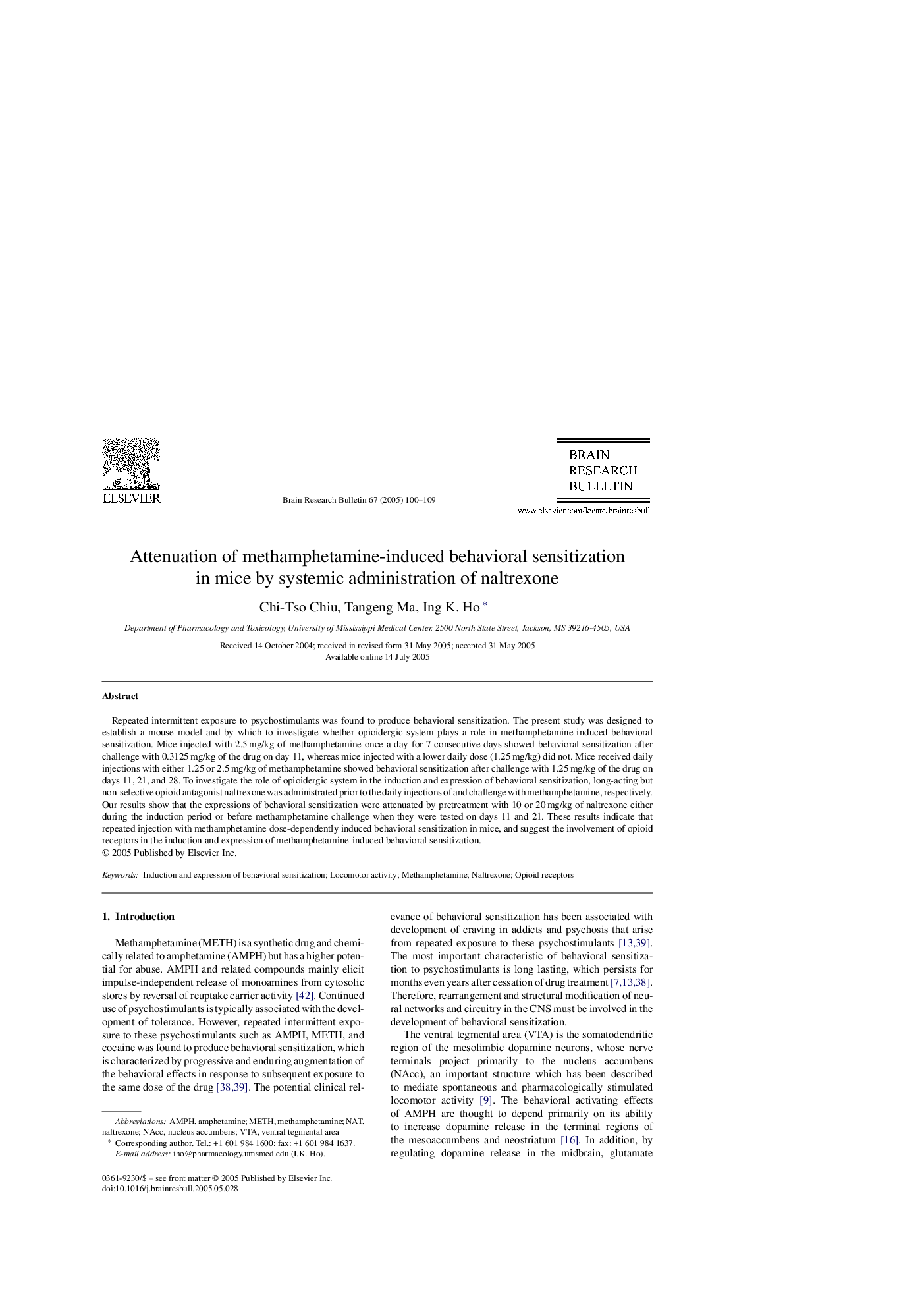| Article ID | Journal | Published Year | Pages | File Type |
|---|---|---|---|---|
| 9409375 | Brain Research Bulletin | 2005 | 10 Pages |
Abstract
Repeated intermittent exposure to psychostimulants was found to produce behavioral sensitization. The present study was designed to establish a mouse model and by which to investigate whether opioidergic system plays a role in methamphetamine-induced behavioral sensitization. Mice injected with 2.5Â mg/kg of methamphetamine once a day for 7 consecutive days showed behavioral sensitization after challenge with 0.3125Â mg/kg of the drug on day 11, whereas mice injected with a lower daily dose (1.25Â mg/kg) did not. Mice received daily injections with either 1.25 or 2.5Â mg/kg of methamphetamine showed behavioral sensitization after challenge with 1.25Â mg/kg of the drug on days 11, 21, and 28. To investigate the role of opioidergic system in the induction and expression of behavioral sensitization, long-acting but non-selective opioid antagonist naltrexone was administrated prior to the daily injections of and challenge with methamphetamine, respectively. Our results show that the expressions of behavioral sensitization were attenuated by pretreatment with 10 or 20Â mg/kg of naltrexone either during the induction period or before methamphetamine challenge when they were tested on days 11 and 21. These results indicate that repeated injection with methamphetamine dose-dependently induced behavioral sensitization in mice, and suggest the involvement of opioid receptors in the induction and expression of methamphetamine-induced behavioral sensitization.
Keywords
Related Topics
Life Sciences
Neuroscience
Cellular and Molecular Neuroscience
Authors
Chi-Tso Chiu, Tangeng Ma, Ing K. Ho,
